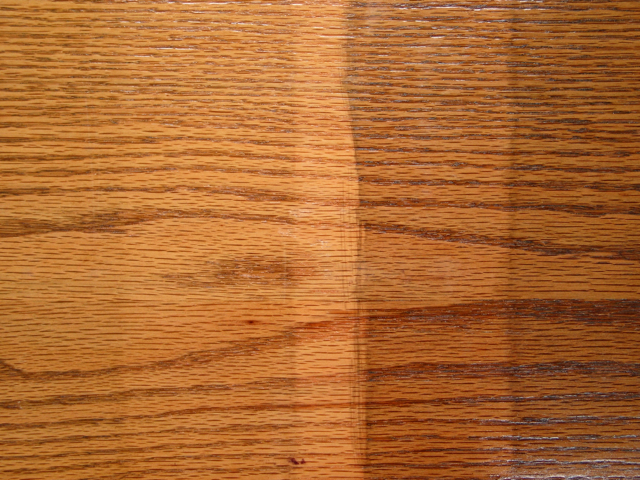We may receive a commission when you use our affiliate links. However, this does not impact our recommendations.

Stains differ in the amount of colorant they include. On this panel I applied one brand of walnut stain to the left side and another brand to the right side, then wiped off the excess. I let the stains dry thoroughly and applied a second coat of the same stain to the outer quadrants followed by wiping off the excess. Notice that there is a big difference in the amount of color the two brands add to the wood. The stain on the right has a higher ratio of colorant (pigment and/or dye) to liquid.
When you’re choosing a stain, you need to be aware not only of the color you’re getting but also of the intensity of that color. Brands of stain differ in their color intensity. Unfortunately, the only way to learn the differing color intensities is to actually use several brands of stain.
You can weaken the color intensity by adding thinner to the stain. You can make the stain darker by adding more colorant. The easiest to add is pigment available in paint or hobby stores. You would add an oil or Japan pigment to oil stains and universal colorants to water-based stains.
There are several other ways you can make the stain darker on the wood. One is to let the stain dry thoroughly, then apply a second coat. Another is to leave the stain wet on the wood longer so some of the thinner evaporates, leaving a higher ratio of colorant to liquid. The stain isn’t penetrating deeper into the wood, as is so often claimed.
Leaving the stain longer on the wood to get a darker color works better with oil stains than with water-based stains because most water-based stains dry too quickly. You’re more likely to lose control of the color.
You could also leave the stain a little wet on the wood to get a darker color; don’t wipe off all the excess. But this is also difficult to control, and if you leave too much, you may muddy the wood and the finish could peel at the weaker stain layer.
– Bob Flexner
Here are some supplies and tools we find essential in our everyday work around the shop. We may receive a commission from sales referred by our links; however, we have carefully selected these products for their usefulness and quality.









ahhhh….lodge: light bulb moment. Very good Bob. I knew I came here for a reason. Thanks.
Doesn’t sandpaper grit also help with how dark or light a stain is? The higher the grit, the smoother the wood, which means the less the stain is able to penetrate, right?